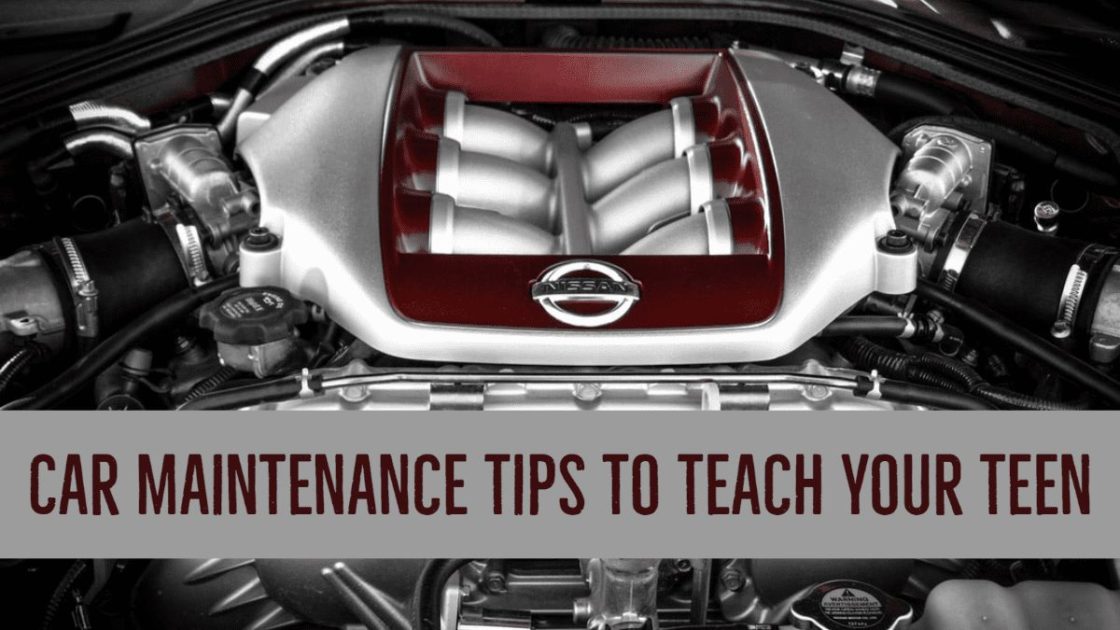One of the biggest milestones in a teenager’s life is learning how to drive. How soon you can do this depends on where in the country you live in. Most Canadian teens are able to start learning to drive at 16. However, Alberta allows a teen to obtain a learner’s permit at the age of 14. and usually receive a license somewhere between 16 and 25. But nowhere in the country is there a requirement for teens to learn car maintenance.
Parents often choose to teach teenagers to drive themselves, despite how frightening it can be. However, teaching your teenager how to drive is only part of teaching them to be a responsible driver. Young drivers must also be taught the basic mechanics of how their vehicles work, basic car maintenance, and emergency procedures.
First, make sure your young driver knows where to find a reliable local mechanic. They might have seen the signs for your local garage multiple times, so they may already know where the closest mechanic is without you having to tell them. But then again, the closest isn’t necessarily the best. Teach your teen how to choose a mechanic and when to call them. You’ll also want the mechanic to look over the vehicle before your teen starts driving just to make sure everything is in tip-top shape.
How Does An Engine Work?
For many people, the internal mechanisms that allow their car to move from point A to point B are a mystery. Car engines are complex, but it’s important to have at least a basic understanding of how they work and their basic parts.
Electric cars aside, vehicles use the internal combustion engine to convert gasoline into movement. Internal combustion engines use pistons, which sit inside the cylinders. There are attached to a moving crankshaft to generate the mechanical energy needed to turn the wheels. Engines can have anywhere from two to 12 pistons and cylinders inside it.
Tiny explosions power the movements of the piston. The explosions happen when a compressed mixture of air and gasoline is ignited inside the cylinder by a sparkplug. As an engine works, it grows hotter, so car engines also contain radiators and a water pump that circulates the cylinders to keep the engine cool.
In order to power the sparkplugs, cars contain an electrical system powered by a twelve-volt battery. The electrical system is also responsible for starting the car when your teen turns the ignition key. This powers a start solenoid, which is a large electrical switch that handles the necessary current you need to start the car.
Another important part of the engine is the exhaust, which is pumped out through the exhaust pipe and muffler. The muffler dampens the sounds of the engine so you don’t hear the thousands of explosions per second the engine makes. Finally, the alternator allows the mechanical energy the car produces to be turned into electrical energy that recharges the car battery, which powers your lights, radio, seats, and the car’s computer.
Performing Basic Maintenance
Car maintenance is extremely important. In fact, a new car would only last a few years on the road without it. One of the first things about car maintenance your teen should know is how to read the owner’s manual. Have them check the pages about maintenance and make sure they know how often they need to get the oil changed, tires rotated, filters changed and belts and hoses checked.
You should also make sure they know how to check their oil levels and, if you’re confident teaching it, how to change the oil. Be sure they know how to check the other fluids an engine uses as well, including transmission, brake, coolant, and washer fluid.
Your teen should know about how to keep their tires properly maintained and at the right PSI. Also, you may want to teach them how to check their belts and hoses for damage and wear so they know when to have them replaced.
Other Maintenance Tasks
If you are confident in your skills and knowledge, you can also teach your teen how to:
- Swap out their wiper blades
- Change their oil and engine other fluids
- Maintain the battery
- Inspect, clean and/or replace the spark plugs
- Perform a radiator flush
- Check their brake pads and clean the brake dust off of your wheels
- Replacing bulbs
- Clean your car
The more car maintenance you and your teen know how to do, the less money you have to spend to have the professionals do it.
Seasonal Driving
Depending on where you live you may want to teach your teen how to prepare their vehicle for a change in the seasons. Knowing at what temperature you need to change the ratio of water to antifreeze in your radiator for example.
Emergency Procedures
Young drivers need to know a few emergency procedures as well. These include:
- Changing a tire
- How to handle tire blowouts
- What to do when the dreaded check engine light comes on
- How to handle vehicle breakdowns
- What to do in the case of an accident
Learning how to drive and learning to be a responsible driver are different things. Make sure your young driver knows about their car, how to care for it, and what to do when it stops working. Not only will they be better drivers, but they’ll be more responsible adults.


